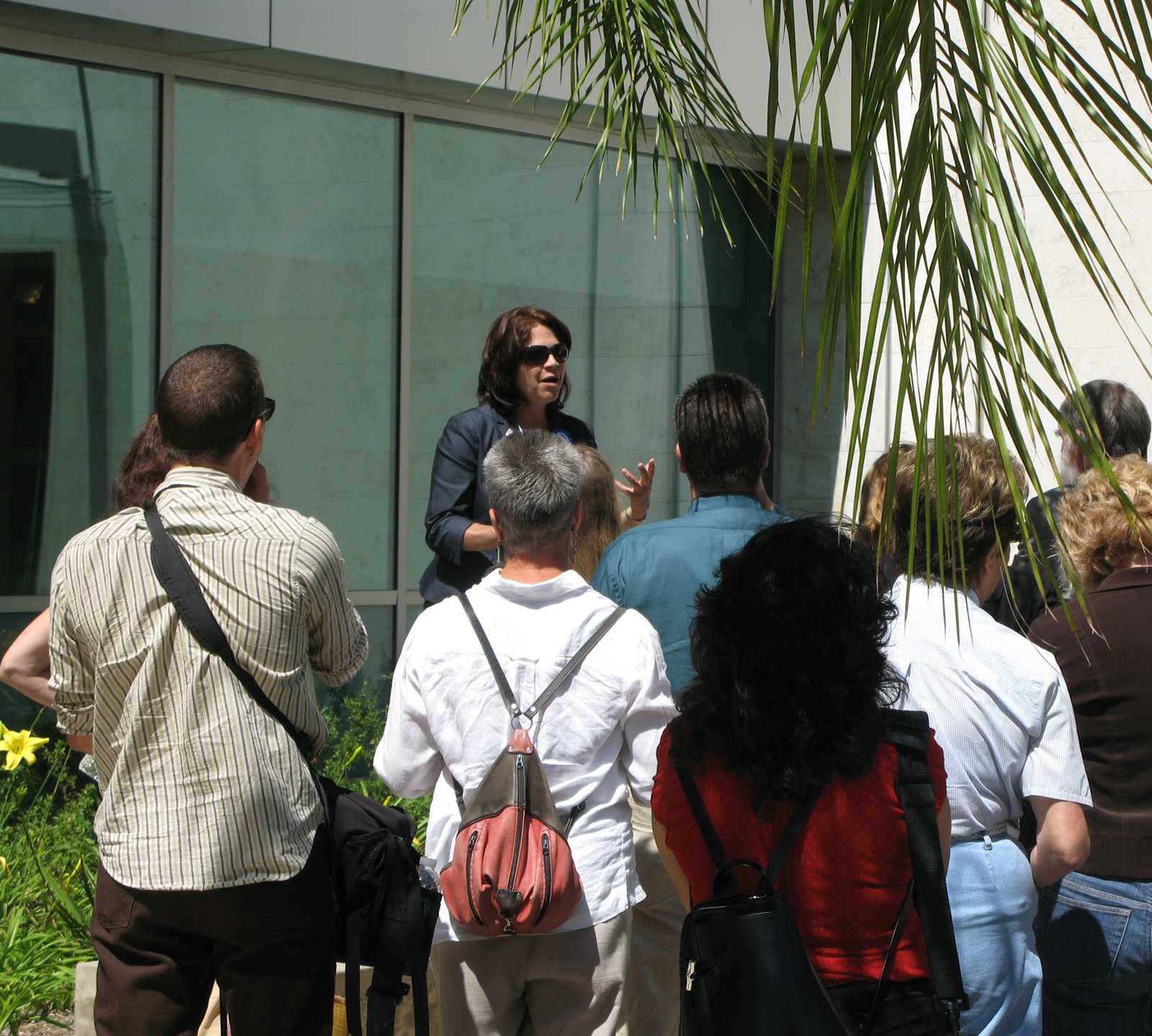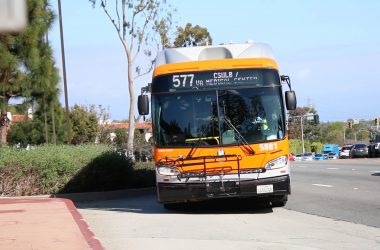As the California State University system prepares for a projected 20 percent cut in state funding, students and faculty are putting up resistance to additional fee increases, furloughs, layoffs, and enrollment and class reduction.
Due to the $26.3 billion state budget gap, the CSU is facing an approximate $584 million deficit.
At Cal State Long Beach, the state-appropriated funds of $200 million will be cut by nearly $42 million, CSULB President F. King Alexander said in an e-mail addressed to faculty and staff. Alexander said that the state has decreased its support from approximately $6,400 per student to $5,000.
At a July 14 meeting of the CSULB Coalition, faculty and staff members devised ideas for informing the CSU community about the budget situation and to inspire them to take action.
The CSU board of trustees suggested July 7 the implementation of a fee increase of up to 20 percent, on top of the 10 percent increase approved in May.
The increase would be $672 for full-time undergraduates, in addition to the May $306 increase. Nonresidents may also see a tuition increase of $33 per semester unit.
A 15 percent increase would give CSULB $8.2 million, while a 20 percent increase would raise $11.5 million, said Praveen Soni, chair of the Academic Senate, at the coalition meeting.
The board is scheduled to vote on the increase July 21 but is also going to discuss enrollment and furloughs.
The CSU system usually admits approximately 35,000 freshman and transfer students each spring term but decided July 9 to reject most spring 2010 prospective students as part of a greater plan to reduce enrollment by 40,000 students for the 2010-2011 academic year.
“It’s a short-term tragedy, and a long-term tragedy, if we close the doors to students,” said Elizabeth Hoffman, California Faculty Association associate vice president.
Students for Quality Education is holding a rally and protest during the board’s meeting at the CSU chancellor’s office from 10 a.m.-4 p.m. on July 21 in hopes of preventing fee hikes, class cancellations and faculty layoffs.
There will be rallies at 10 a.m. and 2 p.m., as well as a “walk of shame” at 8 a.m., where students can participate in a “die-in” as the chancellor and trustees arrive.
“It would be symbolic of them bringing a death to our education,” said Danny Santana, a history and Chicano studies major at Cal State Northridge, at the coalition meeting, “so it’s kind of a funeral procession as well.”
SQE is also planning to camp at the office the night before and will hold a candlelight vigil.
“We have a long fight ahead of us,” Santana said.
Both the CFA and the CSU Employees Union are voting on furlough proposals online from July 13-20. Employee salaries and benefits make up about 86 percent of CSU’s budget.
Systemwide furloughs would save the system $275 million. At CSULB, furloughs would account for $20.3 million, Soni said. Alexander said if furloughs are not implemented, the same amount would be reduced through layoffs. The remaining $7 million-$9 million would be taken through measures such as travel reductions, employment freezes and attrition, and service hour reductions.
According to a CSU press release, furloughs would save 22,000 class sections in the upcoming academic year, or 15 percent of the system’s classes, but some are concerned that furloughs are not guaranteed to save classes or jobs.
“Many [CSUEU members] may lose their homes, file for bankruptcy and lose their credit worthiness,” said Peggy O’Neil, CSUEU chapter president at CSULB, via e-mail. “The impact will further prevent many students access to the university to get their tax-payers’ worth for a decent education.”
The CFA is voting on Chancellor Charles B. Reed’s proposal: two-day-a-month furloughs for a year, with no cuts to pay or benefits.
According to the CFA Web site, the union’s board of directors offered no recommendation on the proposal, which would be on a par with a 9.5 percent pay cut, due to different opinions among union members.
It is not yet known what will happen if CFA’s members accept the proposal, though “we have the expectation that jobs will be saved” and campuses would probably have to discuss several variables, such as the furlough days and whether all faculty will share the same furlough days, said Peter Kresya, CFA treasurer.
“I think that the general idea is that nobody knows what the hell is going on,” said Lisa Vollendorf of the Academic Senate at the CSULB coalition meeting.
Without furloughs, however, many expect layoffs.
“Imagine the long-term, devastating implications those layoffs would have to our students,” Kresya said.
CSULB has already cut several class sections for the 2008-2009 academic year.
Faculty and staff were also notified July 15 that University 100, the mandatory class that introduces freshmen to CSULB, has been suspended for two academic years, beginning this fall, with the incoming class waived of the UNIV 100 graduation requirement.
Lynn Mahoney, associate vice president for undergraduate studies, said that while the information is “critical,” CSULB is looking for ways to get the same information out to freshmen in some other way.
“I think that some students will suffer from the lack of University 100, particularly first-generation students and students with special needs,” Mahoney said.
Mahoney said that the program’s suspension would save “roughly a couple of hundred thousand dollars” and allow some full-time faculty to focus more on teaching within their departments.
According to Soni, about 60 lecturers have already been lost because of the 2008-2009 class cancellations. David Dowell, vice provost for strategic planning, previously told the Daily Forty-Niner in June that anywhere from 70 to 90 part-time faculty members will not be offered employment in the fall.
The CFA has been brainstorming and created furlough proposals and changes to the chancellor’s plan, many of which the CSU rejected, the CFA Web site said.
The union’s proposals included fewer furloughs of elongated periods, the ability to choose furlough days, no layoffs for tenure-track faculty, payments for senior faculty who are laid off or retire early, and reductions to executive benefits and raises.
The CSU cannot force faculty furloughs without the CFA’s agreement. The CFA represents approximately 23,000 faculty within the CSU system.
Meanwhile, non-academic employees also are voting on a furlough plan. The CSUEU represents about 16,000 employees and voted to discuss furloughs June 23.
According to the union’s Web site, its bargaining team recommends a “yes” vote.
Under the CSUEU’s tentative agreement with the CSU, employees would be able to choose furlough days under administrative approval. Public safety employees would be exempt
from furloughs.
Full-time employees would have up to 24 furlough days between August 2009 and June 2010. Part-time employees would have furloughs depending on the number of hours they work.
The agreement also suggests — but does not require — that each campus be closed on furlough days. Campus presidents would also have the choice to make furlough days out of holidays that have separate observance days. Also, student assistants would not be allowed to work increased hours.
O’Neil said that if CSUEU members reject the agreement, there are two options: Either the bargaining team will attempt to renegotiate and ask members to reconsider, or the CSU will begin laying off employees.
The union is also holding ratification meetings at each chapter to discuss the agreement and answer questions, as well as to possibly make changes to the tentative agreement. The CSULB chapter is meeting July 16.
The Academic Professionals of California, a union of 2,400 student services employees, previously voted to negotiate with the CSU.
E-mail addresses are used only to notify you of replies and are not displayed
Comments powered by Disqus




